A History of Planning in 50 Objects
We’re going to source 50 plus objects that represent planning over the years, ideally one for each year if that is possible.
They have to be actual objects, not concepts; but anything you can photograph should count. U-matic machines, copies of Sharp Stick and trophies all count. The more culturally and strategically relevant they are the better; humour is not discouraged.
(All contributions will be attributed to the nominee).
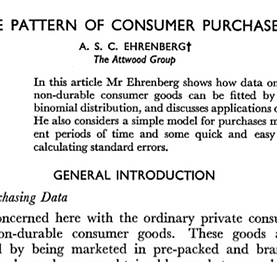
1959
The original How Brands Grow
Original paper published by Andrew Ehrenberg, establishing the central principles popularised over fifty years later by Byron Sharp. Remarkable not only for the fact that it was there all along (but densely mathematical), but also that it was published in a statistical not market research journal.
Adrian Langford
Planning Director at J Walter Thompson

1960
Soap Wars, fought on emotion
It was my first Laundry focus group. A room divided by brands: Ariel, claimed by those who wanted performance, certainty; Persil, by the middle-class-dreamers, thinking of muddy children returning from a suburban garden. 40+ years of constructed meaning. Built by insight & advertising. A planner's text book brought to life.
Matt Gladstone
Planning Partner at Grey London

1963
Way out projective tasks Peter Cooper and CRAM
The adoption of discussion groups by planners to develop advertising spawned a research industry. But there were always high end practitioners who pushed the envelope big time. Chief among them was Peter Cooper founder of CRAM. Respondents in his groups modelled clay (John Major election 1992, made psycho drawings Guinness 1985 and described dairy brands in terms of what it would be like if it were a breast 1983. Penises and vaginas loomed large in his debriefs. Planners had to turn these kind of debrief into ad briefs! Peter WAS brilliant and inspired ground breaking work
John Griffiths
CEO Founder at Planning Above & Beyond

1967
A Pint
How many briefs, ideas or debates about the effectiveness of pre-testing have started and been fuelled by a pint (or three)? It's had its place at the heart of the advertising community since the beginning, bringing people together to spark creativity - and, occasionally, pulling people apart.
Charlie Brenninkmeijer
Senior Planner at Grey London
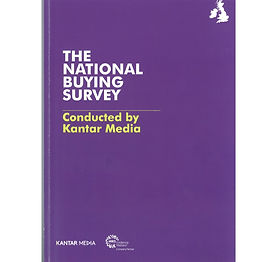
1969
The TGI Survey from Kantar
I have a deep-seated love TGI. Whether offline or online – it’s a magnificent beast that has been instrumental in helping me get to grips with understanding consumers (and for pulling the odd useful stat on how many pints a week people drink).
Anna Thairs
Planner at Grey London

1970
The Philips audio cassette - used once then stored for 5 years
The Philips audio cassette was the default way qualitative data was captured, and the final arbiter of what it meant; complete with hesitations and shifts in the emotional climate of the participants. On an early digital audio editing course researchers were shown how to edit mp3 files to cut out those pesky silences and make a great audio quote for PowerPoint. An eminent researcher protested. Don’t cut the silences. That’s the most important bit!
John Griffiths
CEO Founder at Planning Above & Beyond

1970
Umatic Video Recorder
Creative research jump started the qualitative research industry. Animatics or keyframes with a soundtrack was the closest way to convey the idea behind a TV script. The planners carried these monsters into living rooms to test advertising ideas. At BMP the argument ran that women couldn’t be planners because they couldn’t heft the Umatic off trains and taxis. Till Jane Newman proved them wrong.
John Griffiths
CEO Founder at Planning Above & Beyond
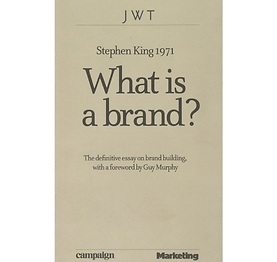
1971
What is a brand?
The paper, written by Stephen King in 1971, is the most definitive explanation of what our industry is here to do: build the long-term value of brands. In it, he highlights the importance of knowledge and commercial understanding, as well as long-term thinking, to create truly effective work for our Clients.
J. Walter Thompson

1973
First application of planning outside advertising
Applying planning thinking outside of advertising came only 5 years after its founding. Using hand compiled statistics typed by his wife, Peter Jones developed a parallel business while at BMP to use planning thinking to determine which horses from which stables on which race courses could beat the odds. BMP was always a betting agency. One graduate trainee (also a chess prodigy) was expected to pick the best runners of the day before starting his day job! Peter Jones claims that the Trainer’s Record issued annually for many years was the first ever book about account planning.
John Griffiths
CEO Founder at Planning Above & Beyond
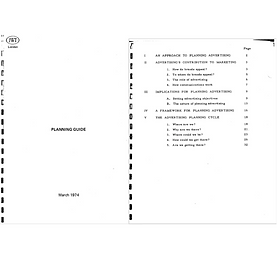
1974
Planning Guide
Created especially for Planners at JWT, Stephen King produced a guide to encourage an innovative approach to Advertising Planning. It was more than just a set of procedures to follow, it stimulated imagination and creativity too.
J. Walter Thompson

1974
Testing To Destruction
There’s some debate around including books, but this slim tract is the mother lode on creative development research. The account of a woman’s random walk towards buying floor cleaner will leave your neat customer journey in shreds. Over forty years on it’s more relevant than ever.
Adrian Langford
Planning Director at J Walter Thompson

1975
Electronic Calculator (Casio 121-F)
In the pre-spreadsheet 1970s, every planner’s constant companion: for looking at patterns in data from Nielsen and TCA, Usage and Attitude Studies, calculating averages, percentages, sales per point of distribution, graphing it all (with graph paper, pencil and ruler), and of course adding up your expenses...
Paul Feldwick
Consultant and Author

1977
The humble sticky note
One of the most helpful pieces of advice I’ve been given is to write out your killer strategic points on sticky notes, and then rearrange them to help find the most effective narrative. I don’t think I’ve seen a planning department not covered in flouro pink and orange.
Anna Thairs
Planner at Grey London
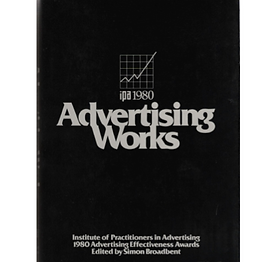
1980
Advertising Works – the first volume
Edited by Simon Broadbent, with an introduction by Stephen King, these were the first truly rigorous published case studies demonstrating the real business results of advertising. A game changer at the time, but no-one anticipated how far the next four decades of Effectiveness Awards would transform our understanding of how advertising works.
Paul Feldwick
Consultant and Author
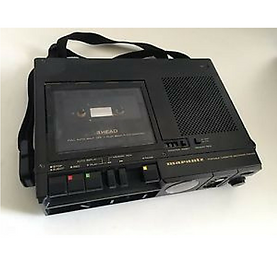
1980
Marantz PMD222
The video side has been covered, but for those telling verbatims, BMP planners on qualitative duty were armed with these wonderful Marantz recorders. They doubled as alarm clocks - when the time came to turn the tape over it was time to move onto the second script!
Adrian Langford
Planning Director at J Walter Thompson

1983
Colour coded BMP coffee mug
BMP operated a simple colour coding system — red for account planning, green for account management, and blue for media (remember when media was in the agency?). It applied to document covers and in this case to mugs. Simpler days.
Adrian Langford
Planning Director at J Walter Thompson

1983
Hofmeister George The Bear animatic
Animatics were the campaign pre-testing tool used by BMP planners in thousands of focus groups from the 1970s. John Webster crafted them to represent exactly how he envisaged a future TV ad, timed storyboards. Consumers' responses to them guided the planners' development of nearly all his great campaigns, including Hofmeister.
James Best
Ex-Chairman and Planner at BMP/DDB
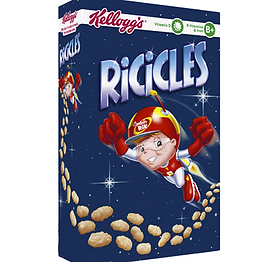
1985
Captain Rik, the hero of Ricicles.
My first project as a planner at JWT was nothing to do with advertising, reflecting how interconnected top agencies then were with client marketing departments. After some research among four- and five-year olds (to call them ‘focus’ groups would have been grossly inaccurate), Captain Rik was born. He flew around the Ricicles pack enthusiastically for over thirty years.
John Shaw
Chief Strategy & Innovation Officer at Superunion
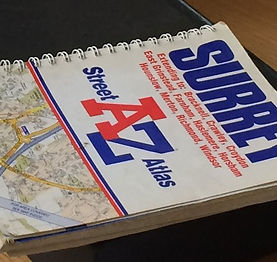
1985 - 2005
A-Z The Complete Works
Vaughan Flood
Vaughan Flood
Founding Director at Flood and Partners
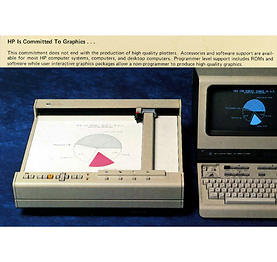
1986
HP Plotter — an alternative to ashtrays
The white heat of the technological revolution swept through Bishop's Bridge Road when BMP mated its sole PC with a plotter, copy of Harvard Graphics, and a selection of fibre tipped pens. Prior to that the secretaries created pie charts by laboriously tracing round BMP's Dunhill client ashtrays.
Adrian Langford
Planning Director at J Walter Thompson

1986
IBM PC
Boase Massimi Pollitt's very first computer, and acquired by accident through the agency's takeover of the Marketing Solutions company. We didn't actually have any software, so the geekier Simon Silvester hooked it up as a Telmar TGI terminal through the blisteringly slow modem.
Adrian Langford
Planning Director at J Walter Thompson

1987
Powerpoint
PowerPoint gets a lot of undue hate! Yes, its random animations cause decks to go awry. Yes, its drop shadows speak of darker graphic-design times. But PowerPoint helped me figure out how to present my scribbles and ideas in an easy-to-understand way, and its format helps refine long convoluted stories into succinct and convincing narratives.
Anna Thairs
Planner at Grey London
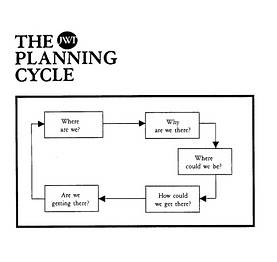
1987
The Planning Cycle
Devised by Stephen King, and published in 1987, this tool provides a structured framework for forming hypotheses and creates a continuous process of learning and modification.
J. Walter Thompson
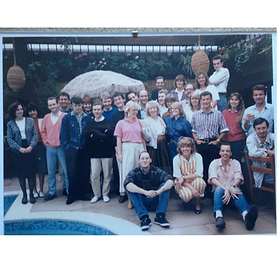
1987
BMP Planning Awayday
Remarkable for the hairstyles as much as how many in this 1987 group are still movers and shakers and thought leaders in the industry over thirty years on — in no order of leadership Paul Feldwick, Guy Murphy, Richard Storey, Mark Earls, Jon Steel, Les Binet, Sarah Carter, Nigel Jones…
Adrian Langford
Planning Director at J Walter Thompson

1987
The brief for the Sistine Chapel roof
The blue planning book was issued by the APG in 1987. Long out of print, the extract which still does the rounds is Damian O’Malley’s fable of the brief given to Michelangelo to paint the ceiling of the Sistine chapel. He gives 5 different versions. O’Malley’s conclusion is that a brief should do more than specify an output. It should inspire. Much later, the story inspired a group of planners in Beijing to do a homage using the Great Wall of China. To read more click here.
John Griffiths
CEO Founder at Planning Above & Beyond
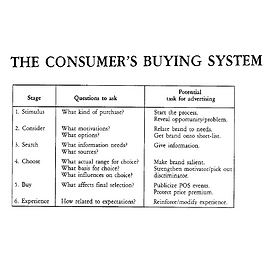
1987
The Consumer's Buying System
Understanding how a brand is bought, used and bought again has always been a vital part of planning. Stephen King invented and published The Consumer’s Buying System in 1987 and in today’s technologically connected world, the complex buying process for most products and brands has meant that this tool is relevant now more than ever.
J. Walter Thompson

1989
Noise-cancelling Headphones
There’s time for talking, jamming, collaborating and generally being open to the world. And then there’s time for closing yourself off from it. That’s the joy of noise-cancelling headphones: the chance to tune in, zone out of your surrounds and let everything coalesce and flow into that beautiful keynote you’re writing. Welcome to your own personal office.
Stephen Pirrie
Planning Director at Grey London

1989
Planning's 21st Anniversary Invite
50th anniversary? BMP partied like it was 1989 to mark the 21st anniversary, with dinner and speeches underneath the dinosaur in the Natural History Museum. The invite was tied to a chunk of Brontosaurus skeleton, delivered in a box marked with the legend "you've just been dug up".
Adrian Langford
Planning Director at J Walter Thompson

1993
Glass of Milk
For many planners, especially in the US, the story of the got milk? campaign was a two-edged sword. On one hand, it provided validation and rationale for the discipline of planning, and what results - business, professional, cultural – could be achieved from the work that we were doing. It was a campaign that was, for those who knew the story, an affirmation that great advertising could come from a collaborative effort. It gave clients who were always reluctant to spend on research and pay for planning some reason to believe that it might be valuable to do so. On the other hand, it set up huge expectations from clients and creatives for the kind of lightning bolt insights they were expecting from planners and from talking to consumers. And it single-handedly boosted attendance in the back rooms of focus groups, as everyone wanted to emerge from the dark after two hours with an almost illegible handwritten note that they were certain would change the world if the creatives could simply put it into a decent spot.
Jay Waters
Instructor at University of Alabama

1996
Sharp Stick
Sharp Stick was the APG parish magazine. It was part rant, part humour about perennial planning themes like creativity versus clients and research. This edition celebrated 25 years of planning (which shows how arbitrary anniversaries are!).
Dominic Scott-Malden
Independent Research Consultant

1997
Xeroxed copy of the BDDP disruption guide
Like the JWT guide before it, my xerox of a xerox of a xerox of the disruption guide was blurry, with pages off-kilter, and brimming with diagrams of little hexagonal disruption thought-starters. Coincident with Fast Company it was another piece of planning samizdat which pushed my thinking.
Robert Davis
EVP Strategy at PJA Advertising and Marketing
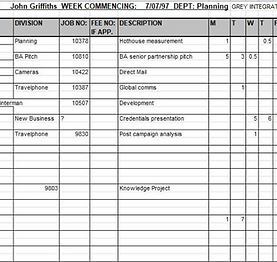
1997
Timesheet
Timesheets weren’t invented until the mid 1970s. When the commission system started to falter and die. If the agency gets 15% media rebate on every ad placed and 17.65% markup on production, then it is awash with money. You work as long it takes to get the ads right. When you are on fees you are effectively selling staff time. And the agency ponders whether to bill planners’ time directly. And how to persuade clients to pay for them.
John Griffiths
CEO Founder at Planning Above & Beyond
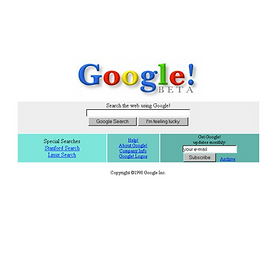
1998
Google Search
Got a question about audience segments? Google it. Need to quickly know what Byron Sharp was on about? Google it. Want examples of brand models? Google it. The point being that Google is often the starting point for a strategy or brief.
Charlie Brenninkmeijer
Senior Planner at Grey London

1999
Dictaphone or Voice Recorder
In the pre-smartphone era these were efficient at capturing sound bites from man-on-the -street interviews and intercepts to validate insights or a creative idea. The may have also been your pre- siri/alexa/google assistant helping record memos, meeting notes and 'note to self' reminders.
Nikita Dighe
Connections Planner at Traffik

2002
The Wire DVD Box Set
Who didn't watch this? Strategy is about taking pieces, and putting together a picture of the whole, so that everyone can understand it. And The Wire taught us to do exactly that. When Detective Lester Freamon said ‘all the pieces matter’, he was reminding us what this gig is about.
Simon Wassef
Executive Strategy Director at R/GA London
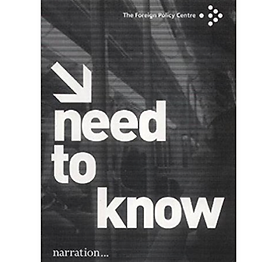
2002
Adam Lury Policy fiction nomination
Planners have always wondered if their ideas are squandered in advertising and should be applied elsewhere. Within years of the New Labour landslide Adam Lury founder of HHCL was writing fiction for The Foreign Policy Centre to show how to apply communications planning to effectively information warfare (or to oppose it). Lury went on to apply communications planning to development in East Africa via comics, radio and SMS - interacting with the audience. Chosen to represent the ways planners have used their smarts to support political parties, governments and policy making.
John Griffiths
CEO Founder at Planning Above & Beyond
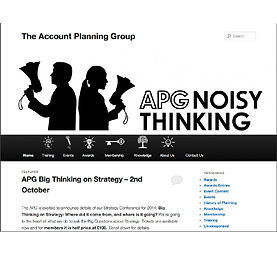
2003
Wordpress
This open source publishing platform enabled the mid-00s blogging boom. Small, close-knit communities could be formed around the exchange of ideas and planning was no exception. One might consider the current generation of agency CSOs the 'Wordpress generation'.
George Morgan
Strategic Planner at News UK

2004
The Podcast
The podcast democratises learning - delivered to you, engaging and digestible, it's turned the morning commute from a drag to an opportunity to learn (or just have a laugh).
Shannon O'Brien
Senior Experience Strategist at Grey London
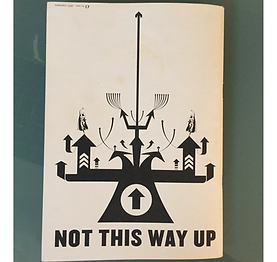
2004
Not This Way Up
Not This Way Up (it had no other title) was a collection of Sharp Stick style articles on planning. Anonymous, subversive, satirical, it celebrated ‘the Dirty Planner’ and had a glossary which included: ‘Best Practice = Copying everyone else’ and ‘Challenger brand=Any brand’.
Dominic Scott-Malden
Independent Research Consultant

2005
Cafes, conversation and being interesting
From around 2005, culture came to the fore and planners rediscovered immersion, staying out of the office and talking in cafes. This collection of café reviews for me captures that time. The curator of these affectionate, slightly obsessive and ironic reviews was Russell Davies the then planning head of Weidens and high priest of Interesting. Whose schtick was not making a fuss, taking ordinary things seriously (but not too seriously). He stole the anthropologists’ lunch.
John Griffiths
CEO Founder at Planning Above & Beyond

2005
YouTube
YouTube was launched in 2005. It has taken few years to grow, but suddenly all knowledge is available all over the world. You don't need to travel to London to see news on APG meetings. This definitely helped to spread the knowledge without the boundaries and borders.
Albert Stęclik
Founder / Planner at Dziadek do orzechów Cracow, Poland

2006
Punchball, Bucharest and the legacy of Stanley Pollitt
Juddery film (sorry) shot as Razvan Matasel, kickboxer and the then planning head at Leo Burnett Bucharest showed me round the department including the punchball which took pride of place. He was quick to remind me that Stanley Pollitt father of planning was a boxer and told planners to fight their corner. I didn’t argue! Nominated by John Griffiths
John Griffiths
CEO Founder at Planning Above & Beyond

2007
A Master Class in Brand Planning: The Timeless Works of Stephen King
Published in 2007, it comprises 20 of Stephen King’s most important articles, each one introduced by a respected practitioner. It serves not only as a valuable reference book, but also as a unique source of sophisticated, contemporary thinking.
J. Walter Thompson

2007
Hashtag
The pound is dead, long live the hashtag. Whilst the icon has been in use since the 70s, Chris Messina proposed to the Twitter that # could be used as a way easily identifying posts on a subject, and that fundamentally shifted how we post work and track opinion. It was suggested, apparently, as it was easy to reach on his 2007 Nokia feature phone!
Harry Bellman
Junior Planner at Grey

2009
Uber (for X)
Uber represents the sharing economy which changed the way we consume and expect brands to provide for us - which in turn affected what planners do. Also, ‘Uber for X’, while tired and trite now, was an easy way to get people thinking differently about their brands and offering.
Rachel Holden
Strategist at Grey London

2009
Actionable Insight? Time to reach for my censor’s stamp
Insights have been currency so long, it’s startling to think that the word was never used when account planning started. But became so overused that Richard Huntington aka blogger Adliterate declared 2009 to be the year of the insight, dismissing research as a source and commending introspection, real people (not respondents), academics and ‘weird shit’ instead. He also issued this stamp with which to despatch insight free documents. Nothing could better demonstrate our utter dependence on real insights. And our frustration with the counterfeits. Not insights. Not even observations. But banalities.
John Griffiths
CEO Founder at Planning Above & Beyond

2013
Amazon Alexa
We're already seeing the impact of Alexa on day-to-day life (and so marketing strategies!) and generally I think we all agree this will just increase in the years to come...
Anna Thairs
Strategist at Grey London
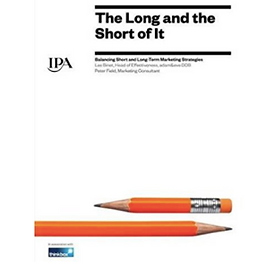
2013
Why you should invest in brand: the answer
I have no idea what we all did before Peter & Les published this. The antidote to short-termism and the argument for brand investment. I think I present it at least once a fortnight and quote it twice a day. Bravo.
Kevin Chesters
Chief Strategy Officer at Ogilvy & Mather
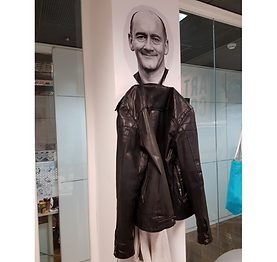
2017
The Jon Steel Coatstand
Jon Steel, the WPP planning supremo and author in Sra Rushmore, Madrid. Is this a send up or a tribute? A bit of both. He overlooks the planners, his image in constant use as his ‘look’ gets refreshed with every arrival or departure. A household deity hidden in plain sight!
John Griffiths
CEO Founder at Planning Above & Beyond

2018
Viewing Facility Takeaway Menus
Being there to hear what normal people think of our work is par for the course in planning. But it can take patience, resilience and a lot of takeaway.
Milla McPhee
Head of Planning at adam&eveDDB

2737
A nice cup of tea
Making a nice cup of tea is the perfect lacuna to help your head devise a killer proposition, a balls out closing statement in a pitch, or a bomb proof argument for not editing out the weird looking bloke in a rough edit.
Darren Savage
Chief Strategy Officer at Tribal Worldwide
